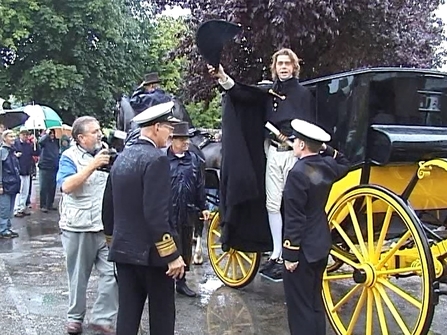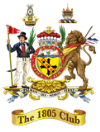The Creation of The Trafalgar Way in 2005
Departure of the Jubilee Sailing Trust’s Training Ship Lord Nelson for Cape Trafalgar
The International Festival of the Sea was held in HM Naval Base at Portsmouth from 1st to 4th July. The New Trafalgar Dispatch had been translated into Spanish. On the 4th July, and in the presence of Admiral Sir Nicholas Hunt, the President of the event, Spanish and English versions, together with a facsimile of Admiral Collingwood’s first Trafalgar Dispatch, were placed in the care of the Captain of The Jubilee Sailing Trust’s Training Ship the Lord Nelson. The ship sailed immediately for Cape Trafalgar and on her arrival on the 15th, wreaths were laid off the Cape to commemorate those on both sides who had died in the battle. The Lord Nelson then continued into the Spanish naval base in Cadiz. The British Naval Attaché to Spain formally presented the Spanish version of the New Trafalgar Dispatch to a senior officer of the Spanish Navy. A reception followed on board the Lord Nelson.
On 19th July the Lord Nelson sailed from Cadiz for Falmouth Arrival of the New Trafalgar Dispatch at Falmouth. Prior to the arrival of the Lord Nelson at Falmouth, Peter Warwick had arranged for the ship’s cutter from HMS Victory to be transported from Portsmouth to Falmouth together with the regular cutter crew.
On 4th August, the Lord Nelson anchored off Falmouth. The English version of The New Trafalgar Dispatch and the bound facsimile of Admiral Collingwood’s first Trafalgar Dispatch were then transferred to the cutter. The cutter crew, dressed in 18th century seamen’s rig for the event, then pulled the cutter from the Lord Nelson into Fish Quay in Falmouth at 3.00 pm, where Peter Warwick disembarked and presented the two documents to HRH, Princess Anne, The Princess Royal.
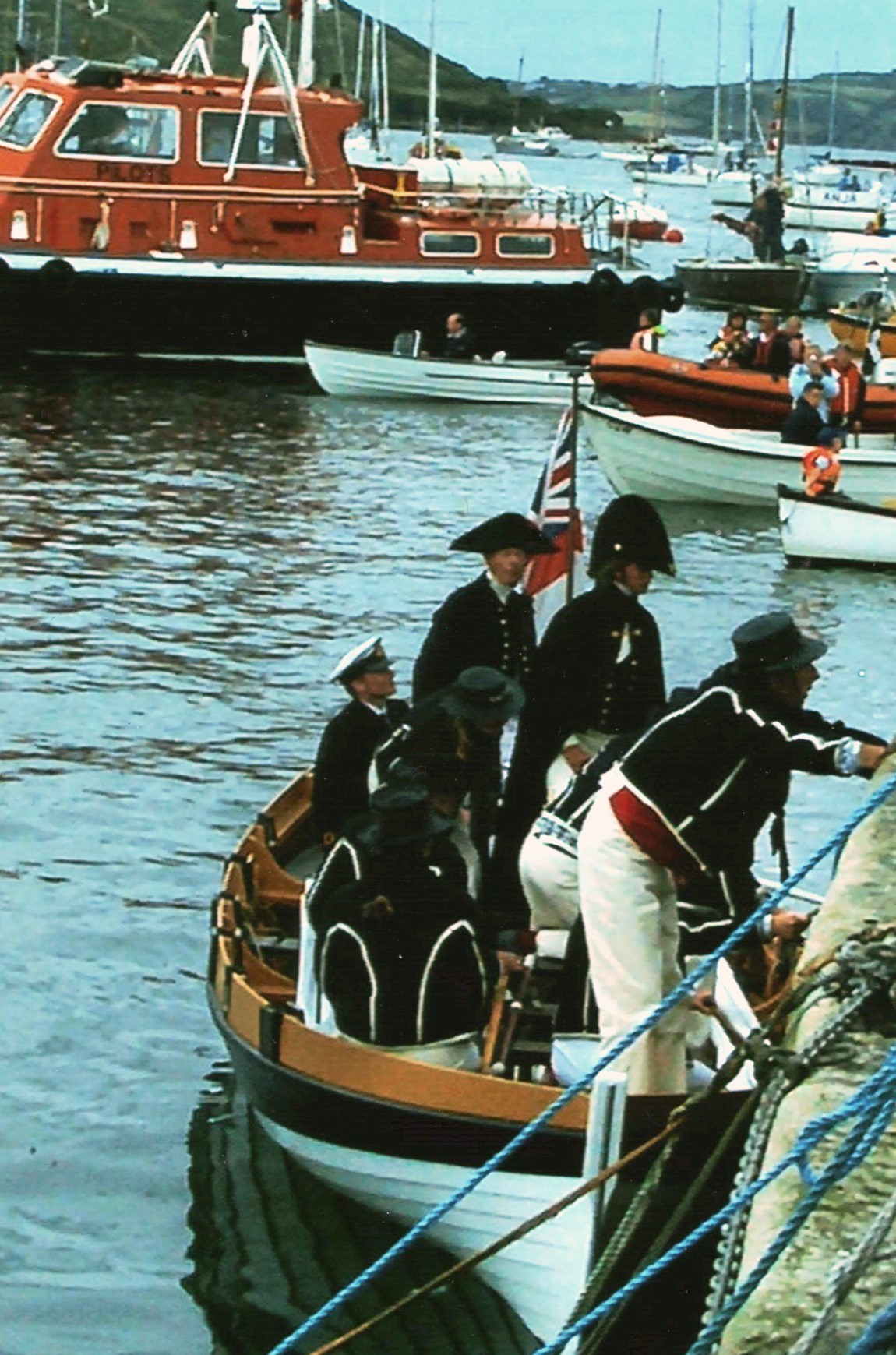
The Princess Royal next moved to the National Maritime Museum in Falmouth for a reception organised by Bonhams, the Auctioneers, where she first reviewed and spoke to the disabled young sailors forming the ships company of the Lord Nelson. Then, later in the afternoon, she attended a concert, including the traditional Beating the Retreat, by the band of HM Royal Marines.
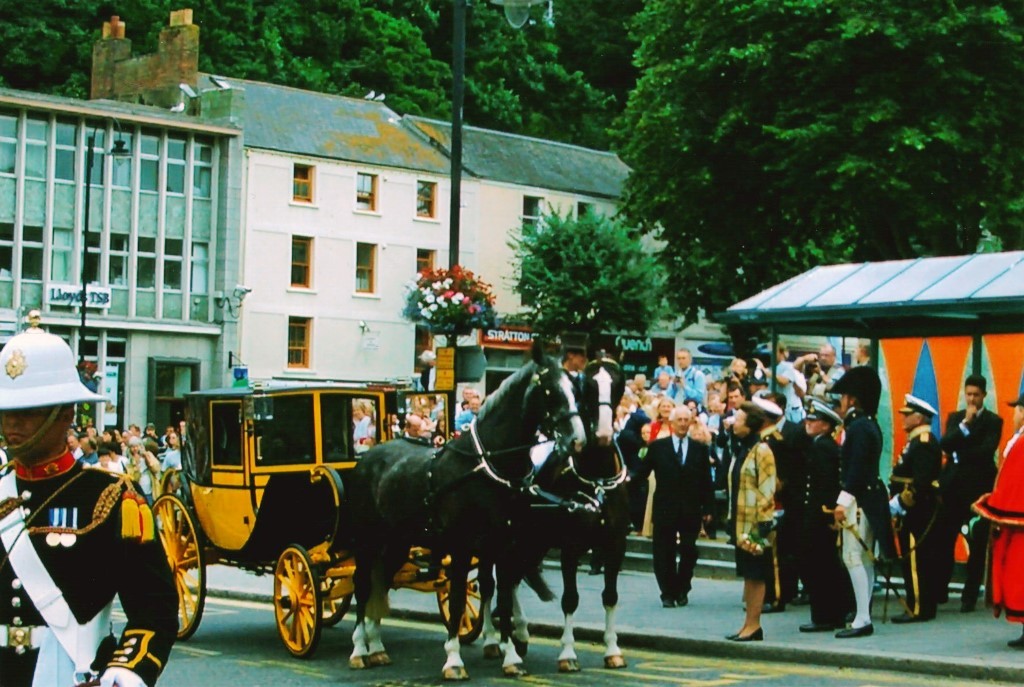
Progress along The Trafalgar Way and unveiling of The Trafalgar Way plaques.
The 21 horse changing locations along the Way after Lapenotiere’s departure from Falmouth on 4th November 1805 were Truro, Fraddon, Bodmin, Launceton, Okehampton, Crockernwell, Exeter, Honiton, Axminster, Bridport, Dorchester, Blandford, Woodyates, Salisbury, Andover, Overton, Basingstoke, Hartfordbridge, Bagshot, Staines and Hounslow before arriving at the Admiralty in Whitehall at 1.00am on 6th November. During the recreation of Lapenotiere’s journey, the plaque unveiling ceremony at each location broadly followed the pattern described in Part 2 - Preparations, sometimes with minor variations to take account of local circumstances. Locally organised supplementary events also occurred, to celebrate the passage of the post chaise.
Read here Liz Jarman's account of the post-chaise journey
At other locations, particularly in the country areas, parties in local inns and street events were held. In Sticklepath in Devon, the landlord of the local inn had a wooden leg and turned out in an 18th Century Greenwich Pensioner’s uniform he had inherited from an ancestor. At the same time the village ladies' Morris dancing team gave a demonstration in the main street and the local brass band performed traditional Devon folk songs and nautical music. In another village a competition was held for the child who was best dressed to emulate Lord Nelson. The winner was five and as a prize was driven around the village green in the post chaise. Regretfully he didn’t enjoy it, threw his hat out of the window and was sick when he got out.
Arrival in London
In London, for the final event, Commander Andrew Gordon Lennox RN had planned and put together the programme. The post chaise was escorted from Knightsbridge barracks by an escort of the Household Cavalry to Hyde Park Corner, down Constitution Hill and along The Mall to Horse Guards Parade. Awaiting the post chaise was a full size Royal Marine Band that escorted them, playing Rule Britannia etc., out into Whitehall and then through the entry arch in Adam screen into the Old Admiralty Building at No 12. There it was received by The First Sea Lord and the Deputy Prime Minister, John Prescott, the latter being then resident at No 12. The presentations were then made to the First Sea Lord, and both he and the Deputy Prime Minister gave speeches.
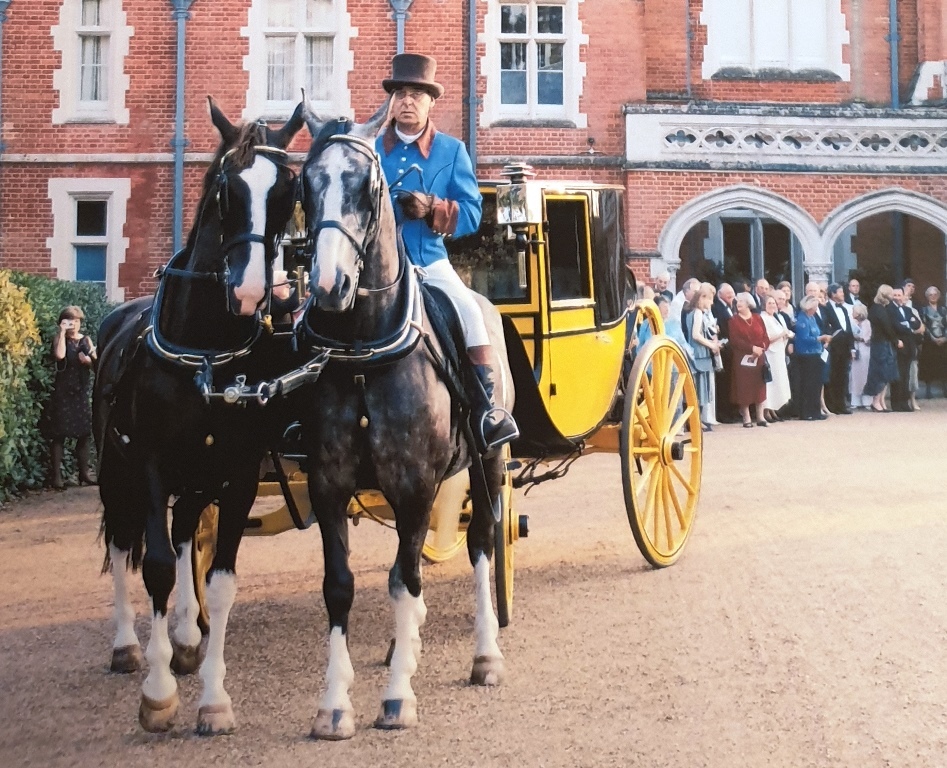
A Trafalgar Way plaque was unveiled on the exterior of the Adam Screen in Whitehall and a reception followed in the Ripley Building, the earliest part of the Admiralty building complex.
Overall, the project proved a great success. Thousands of people turned out to see the events staged along the route. They clearly possessed an underlying pride in the Royal Navy that merely needed a focus for it to be expressed. A clear foundation was laid for imaginative future developments, particularly those having a naval focus.
Reception at Windsor Castle
In 2007, Richard James, at my request, approached his Royal Highness, The Duke of Edinburgh whom he knew personally from accompanying him in his Four in Hand when driving in Windsor Great Park. Richard enquired of the Duke whether he would be prepared to hold a reception to commemorate the arrival of HMS Pickle at Falmouth on 4th November 1805 and the delivery of the news of Trafalgar to King George III at Windsor. His Royal Highness kindly agreed to this and a successful event was held on 7th November 2007 in the Queen’s Guard Room at Windsor Castle. The Duke made an extremely amusing speech, although observing that he could find no trace in the Royal Archives of the copy of the Trafalgar Dispatch supposedly delivered by Lapenotiere. Poignancy was however added to the event by the presence in a display case in the Guard Room of the French musket ball that killed Lord Nelson.
Later plaques
Since 2005, a number of local communities lying on the Trafalgar Way have asked for plaques of their own to be erected and there are now about 40 (Ed - 39 at time of writing). In 2010, in the presence of the then First Sea Lord, Admiral Sir Mark Stanhope and other members of the Navy Board, The High Commissioner for Canada unveiled a plaque at the south end of Canada House in Trafalgar Square, which lies on Cockspur Street part of The Trafalgar Way. The plaque commemorates the 53 men who served in the British fleet at Trafalgar and came from those territories in British North America that became part of the Dominion of Canada in 1867.
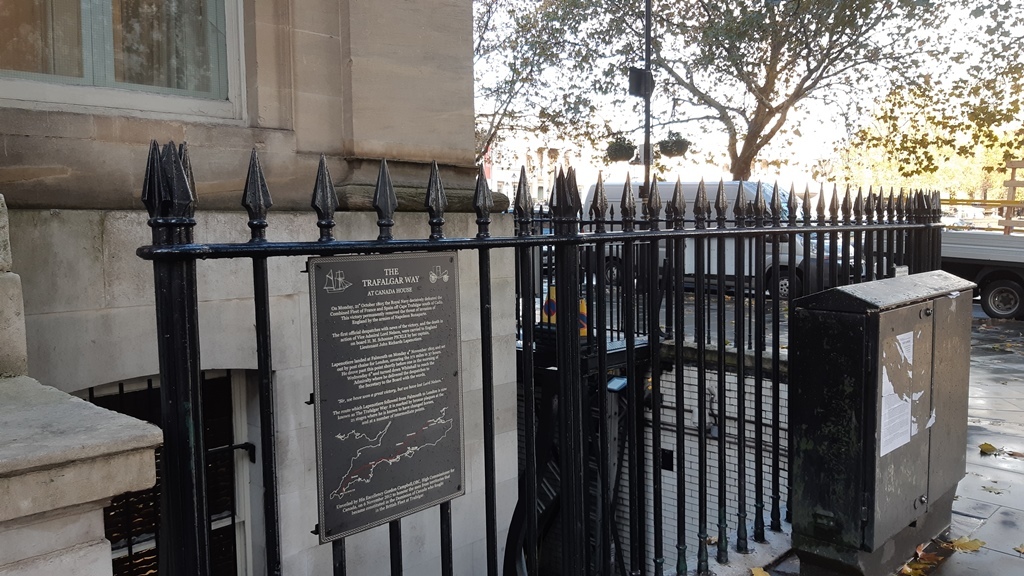
The story continues: read Part 4, "The Trafalgar Way Developments since 2005".
Missed a bit? Go back to read Part 2, "Preparations for the Recreation of Lapenotiere's Journey".





